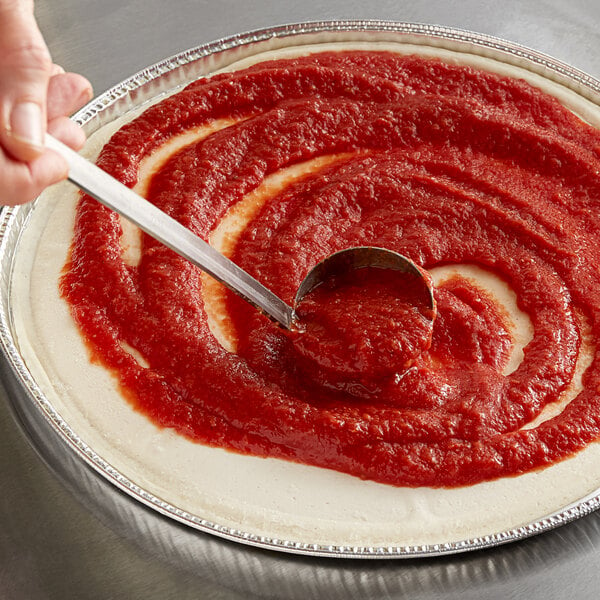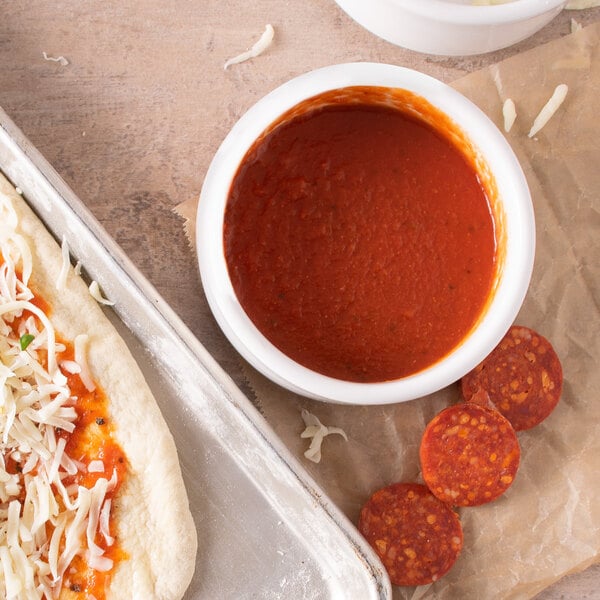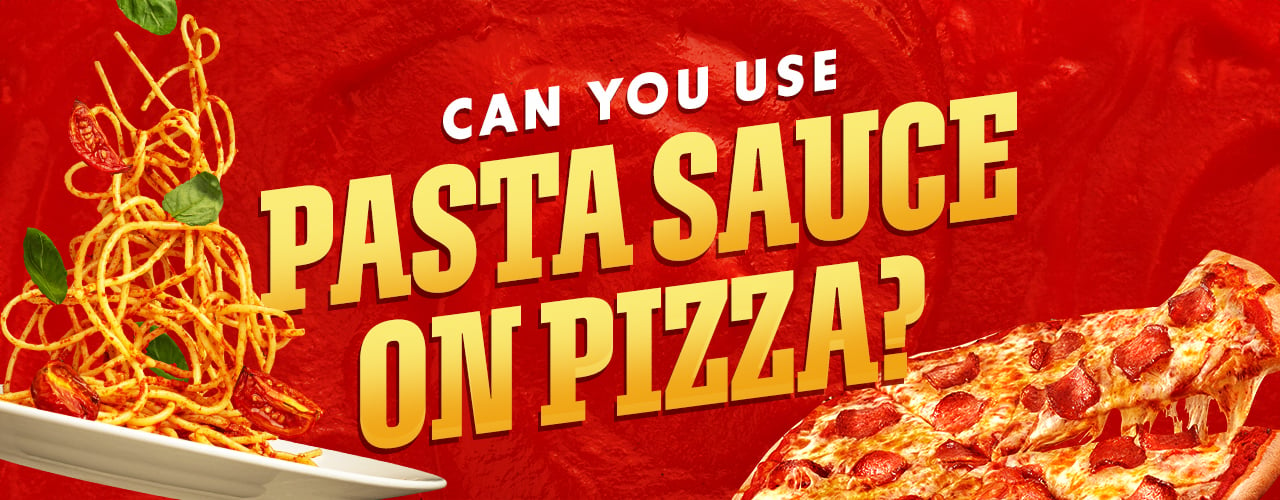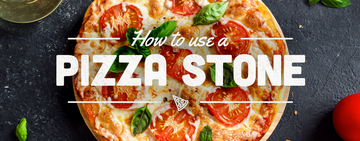Pizza Sauce vs Pasta Sauce: What Is the Difference?
Although they contain similar ingredients, there is a difference between pasta sauce and pizza sauce. Pizza sauce is prepared with uncooked pureed tomatoes while pasta sauce is made with cooked blended tomatoes and flavorful garlic, herbs, and spices.
Whether you’re looking to open a pizza shop or just making personal pizzas, most chefs will agree that the secret is in the sauce. Tomato sauce is an essential ingredient in a pizzeria, but can you use spaghetti sauce for pizza sauce and how will it impact your signature dishes? We set out to answer the question "is tomato sauce the same as pizza sauce," and provide tips and tricks when you’re in a pinch.
Shop All Pizza Sauce and Tomato Sauce Products
Difference between Pizza Sauce and Pasta Sauce

Tomato sauce is similar to pizza sauce, but they are not the same. The main difference between tomato sauce for pasta and pizza sauce is that pasta sauce is cooked in the preparation of the sauce and pizza sauce is an uncooked tomato sauce that cooks along with the pizza. Pasta sauce is cooked prior to serving and will also have fewer seasonings than pizza sauce, predominantly featuring a robust flavor from roasted garlic. So, is pasta sauce the same as pizza sauce? The answer is no, but they are similar. We explore their differences even further below.
What Is Pizza Sauce?
Pizza sauce is typically made with plain tomato sauce or pureed tomatoes and tomato paste, causing it to be a thicker consistency than pasta sauce. The thicker sauce prevents the dough from getting too soggy while the pizza cooks. It also features a variety of spices such as oregano, Italian seasoning, garlic salt, onion powder, and sugar for a tangier flavor profile that perfectly complements the fats and oils in cheeses used for pizza. Pizza sauce is then spread in a thin layer on top of the pizza dough and cooked simultaneously with the dough and toppings, bringing all of the flavors together. Homemade variations may include cooking instructions for the sauce before placing it on the dough.
What Is Pasta Sauce?
Pasta sauce or spaghetti sauce is generally made with crushed tomatoes that boost the water content in the sauce, making it thinner than pizza sauce. The thinner sauces cover your pasta noodles thoroughly to provide flavor in every bite. Pasta sauce will typically only include basic seasonings like salt, pepper, and dried oregano so each chef can season the dish to taste in order to complement the pasta dish and additional ingredients. You will often find tomato chunks in pasta sauce, whereas pizza sauce calls for a smooth tomato sauce that is usually pureed to reduce chunks. Spaghetti sauce may also feature ground beef or Italian sausage.
Pizza Sauce vs Spaghetti Sauce
The difference between spaghetti sauce and pizza sauce is that spaghetti has a higher water content than pizza sauce from the crushed tomatoes, giving it a thinner consistency. This helps it spread more evenly over the surface of the noodles. Pizza sauce is made with pureed tomatoes to make it thick in order to add a layer of flavor between a pizza crust and its toppings.
Pizza is a bit of an American obsession, so getting the sauce right can be the key to running a successful pizzeria. If you use pasta sauce on pizza, chances are that the sauce may be too thin and soggy for some of your customers’ liking.
Pizza Sauce vs Marinara

Marinara sauce is a semi-smooth tomato sauce that is slightly thinner in consistency when compared to pizza sauce but has less water content than standard tomato or pasta sauce. The tomatoes in marinara sauce are peeled, finely chopped, and blended to smooth out the chunks but not thoroughly pureed into a paste-like pizza sauce.
What Is Marinara Sauce?
Marinara sauce is a thick tomato sauce that is often used on pasta and sandwiches or as a dip. It is made by roasting garlic cloves in smooth tomato sauce on a simmering heat. Because it is commonly served with spaghetti or penne noodles, many refer to marinara as spaghetti sauce. It is also served on meatball subs and cheesesteak sandwiches or provided as a dip for mozzarella sticks and onion rings. Marinara sauce originated in Naples in the 19th century and is thought to derive from a dish served to sailors (“marinaro” in Italian) upon their return from sea.
Is Pizza Sauce the Same as Marinara?
Pizza sauce and marinara sauce are similar but not the same. Pizza sauce is thicker in consistency than marinara sauce because the tomatoes are pureed instead of lightly blended. Pizza sauce is usually cooked on a pizza crust, whereas marinara sauce is served as a dip or topping.
Pizza Sauce Recipe
Making your own pizza sauce is simple! Use the following instructions to learn how to make pizza sauce from tomato sauce. You’ll want to have a large mixing bowl and spatula, preferably a red spatula that won’t stain over time. You may also choose to adjust the signature Italian seasonings, as well as the ratios you use to create a specialty recipe for your pizzeria.

Pizza Sauce Ingredients
Servings: 1-2 16” Pizzas
- 15 oz. tomato sauce (smooth, not chunky)
- 6 oz. tomato paste
- 1/2 tsp. garlic powder
- 1/2 tsp. onion powder
- 1/2 Tbsp. salt or garlic salt
- 1/4 tsp. ground pepper
- 1 tsp. granulated sugar
- 1-2 Tbsp. Italian seasoning (to taste)
- Dried or fresh oregano (to taste)
- Dried or fresh basil (to taste)
- Red pepper flakes (optional)
How to Make Pizza Sauce
- Add the tomato sauce and tomato paste to a bowl. If the tomato sauce has tomato chunks, use an immersion blender or food processor to smooth out the tomato pieces. (Puree the ingredients if using canned crushed tomatoes.)
- Add the garlic powder, onion powder, salt, pepper, sugar, and any desired seasonings to the sauce. Mix with a spatula until thoroughly incorporated.
- Use right away on pizza dough or refrigerate in an airtight container for up to a week. You may also freeze pizza sauce for approximately 2 months.
If you’re using refrigerated or frozen sauce, allow the sauce to come to room temperature using proper ServSafe methods to avoid health code violations. To bring frozen sauce to temperature, either thaw it under cold water in a sealed package, thaw it in the refrigerator overnight, or thaw it in the microwave before using it on pizza dough.
Can You Use Pasta Sauce for Pizza?
You can certainly make pizza sauce from pasta sauce with the help of a few ingredients. By straining pasta sauce, blending it, and adding seasoning you can create a substitute for pizza sauce from the pasta sauce in your cabinet. So, if you're asking yourself "can you use spaghetti sauce for pizza," we've included step-by-step directions below to help you do so:
How to Make Pizza Sauce with Pasta Sauce

Can you use spaghetti sauce for pizza sauce? Yes! If you don't have tomato paste on hand, you can use pasta sauce on pizza by following these steps:
- Strain the pasta sauce to remove excess liquid.
- Add the pasta sauce to a food processor or blender and pulse until smooth.
- Add your desired seasoning and salt to taste.
- Pulse a few more times until thoroughly combined.
- Strain out any additional liquid.
- For additional umami flavor, blend in an anchovy filet.
What Can I Use Instead of Pizza Sauce?
Most pizzas are traditionally made with a red pizza sauce made from tomatoes, but you can use other sauces on pizza. Some popular pizza sauce alternatives include the following:
- Pesto
- Ricotta Cheese
- Barbecue Sauce
- Ranch Dressing
- Tapenade
- Olive Oil and Garlic
- Sweet Chili Sauce
- Chimichurri Sauce
- Balsamic Glaze
- Alfredo Sauce
- Buffalo Wing Sauce
So, does pasta sauce work for pizza? Yes, with some adjustments. Regardless of the types of pizza you are looking to make, perfecting your pizza sauce is essential to providing your customers with a memorable experience and turning them into regulars.



